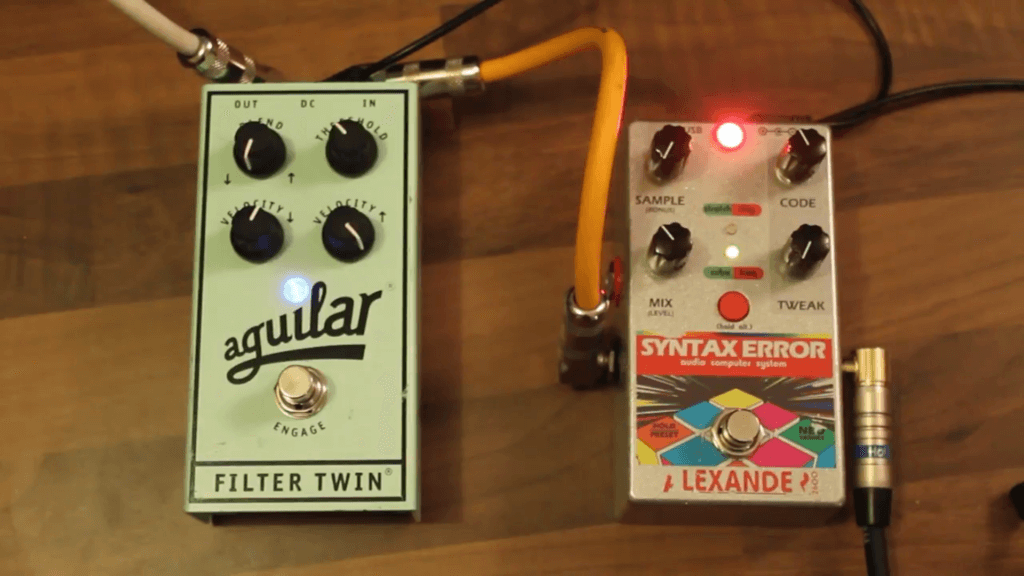Oh the legendary Chameleon bass tone. It’s fair to that say that Chameleon by Herbie Hancock is a popular number at jam nights. But the bass player will always feel a small pang of sadness as they groove it’s funky riff. What’s on their mind? They can groove as much as they like, but they just can’t get that legendary Chameleon bass tone.
Chameleon is the opening track on one of the most popular jazz-funk records of all time, Head Hunters by Herbie Hancock. The synth bass line is so prominent and driving throughout the track, it always falls to the bass player, but rarely sounds the same.
In February 2018, I had the pleasure (and challenge) of performing the Head Hunters album live at London’s Jazz Cafe with Project Karnak. It would have been a disaster to take the stage to perform this classic record with a clean bass guitar tone. Fortunately, I found a formula to get close to that Chameleon bass tone.
What is the Chameleon bass tone?
The Chameleon bass tone isn’t really a bass guitar tone at all. In short, it’s a synth bass. Some of the key ingredients of this synth tone is its quick decay and swooping envelope filter, which gives the tone its enticing, squelchy shape.
In contrast, a dry bass guitar tone is pretty plain, comparable to a sine wave oscillator on a synthesiser. The fizz of the chameleon synth bass comes from using a square or saw-tooth wave as its loudest oscillator.
How to get the sound on bass
Your first instinct might be to turn to a bass synth pedal like the Boss SYB-5. Whilst there have been some interesting developments in bass synth pedals lately, a lot of them don’t make your bass sound like a synth. They definitely have some interesting sounds, but they’ll always sound like ‘one of those pedals’.
The first step is to use a pedal that can act as a bit-crusher effect. It’s also important that this pedal has a mix control so you can blend the distorted tone with the clean bass tone. The bit-crusher will give you distorted artifacts that evoke a synth’s square wave. Blending your clean tone back in will add smooth, warm low-end to the tone and keep things bassy. I turn to cube mode on my Alexander Syntax Error. It’s a particularly electronic and buzzy bit-crusher, so this particular pedal works well with a mix that’s nearly dry. A warmer bit crusher pedal may demand a wetter mix to get a similar sound.
Now we need to achieve the filter envelope quality to shape the notes. Fortunately this is something bass players are more used to doing. A lot of leading filter pedals will work for this, like the MXR M82 or EBS BassIQ. My go-to is the Aguilar Filter Twin. Set a fast (high velocity) downward filter and adjust the blend so only the downward filter is working. You’ll also need to experiment with the threshold setting to check the filter is hitting your notes just right.

Finally for the amplitude envelope, we need to achieve a short decay/sustain and no release. No pedals are needed for this, it’s all down to your technique. Play consistent staccato and you’ll hear the sound come to life. Remember, if you want to sound like a synth, the consistency of a machine is more important then the actual length of time you hold the note. It doesn’t matter if you listen back and hear you’re holding the notes longer or shorter, as long as your notes are all the same length, you’ve done your job. Muting with your left hand will help you keep the notes short.
You can find a demonstration of this process in the YouTube video above as well as other bass-themed videos on my YouTube channel. Read more music posts on my blog.